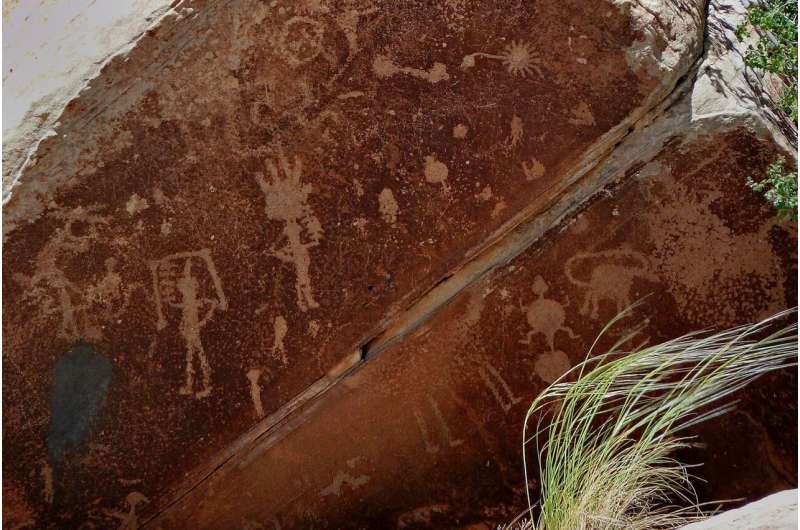Ancient handprints on cave walls in Spain found to include children's hands

A trio of researchers from Universidad de Cantabria and the University of Cambridge has found evidence suggesting that up to a quarter of all ancient handprints found on cave walls in Spain were made using children's hands. In their paper published in the Journal of Archaeological Science, Verónica Fernández-Navarro, Edgard Camarós and Diego Garate describe their study of ancient hand prints found in five Spanish caves and what they believe their findings suggest about ancient hand prints on cave walls in general.
Over the past several decades, hand prints on cave walls have come to represent ancient cave art as much as drawings of animals. Scientists studying the handprints have generally agreed that they, along with the animal drawings, were all likely done by males in a given group. In this new effort, the researchers have found evidence suggesting that up to a quarter of all cave hand prints were made using children's hands.
The researchers began their work by noting that there is very little mention of the impact or activities of children in ancient societies. That led them to wonder about some of the art on the walls of caves across Europe and in Spain in particular—and that led them to take a closer look at the hand prints.
In studying the hand prints, the researchers noted that most of them appeared to have been made using stencils, rather than applying ink to the hand and pressing it against the wall. They also found that most of the stenciled hands had been created using a common technique of the time—placing a hand near a wall and blowing pigments at it using a hollow bone or reed. They further noted that rather than placing their hands on the wall, most of the prints had been done by holding the hand a little distance from the wall—a means for generating a stencil with a slightly 3D look. In replicating the technique with their own hands, they found that such an approach led to a stenciled hand that was slightly larger than the hand used to create it. They then closely studied hundreds of the hand prints, taking careful measurements of each while using 3D photogrammetric models as references.
In looking at their data, they found that up to 25% of the hand prints on the walls in five caves in Spain were of children's hands, some of which could have come from toddlers or even infants. They suggest their findings indicate that doing cave art was a group activity shared among all members, including children. They also suggest their findings hint that some other ancient forms of art, left behind as artifacts, may have been done by children.
Hand and footprint art dates to mid-Ice Age
More information: Verónica Fernández-Navarro et al, Visualizing childhood in Upper Palaeolithic societies: Experimental and archaeological approach to artists' age estimation through cave art hand stencils, Journal of Archaeological Science (2022). DOI: 10.1016/j.jas.2022.105574
Journal information: Journal of Archaeological Science
© 2022 Science X Network
No comments:
Post a Comment